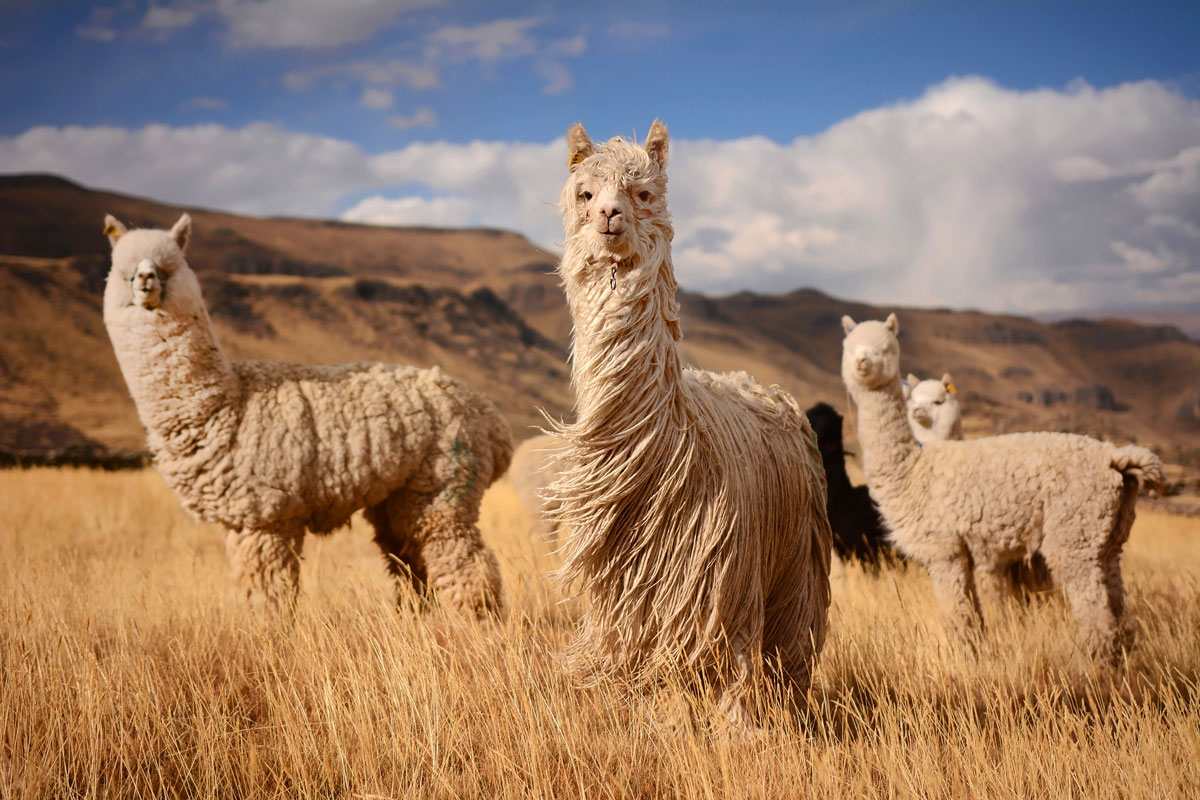Ideal conformation is directly related to the ability to function and thrive. Body parts should be balanced and in proportion to each other giving a graceful appearance and a fluid gait. The textbook alpaca exhibits strong bone structure, a broad muzzle, and a wedge shaped head with erect spear shaped ears. Their gait should be smooth and in a straight line with strong, upright pasterns, and “V” shaped toe pointed forward. Their eyes should be clear and dark in color and lower teeth should meet just under the upper dental pad (correct bit). They should have straight muscular legs squarely set, full coverage of fleece from head to toe, and a straight topline with a smooth rounding at the rear.
Suri fiber is extremely soft, silky, with a high degree of luster and cool to the touch. As the fleece grows, it twists into uniform locks that hang close to the body. It is known for its silk-like lustrous shine and tensile strength, making it extremely attractive for use in luxury textiles and rugs. Suri fibers can also be blended with other fibers such as huacaya alpaca, merino wool, and plant fibers to give the yarn more structure and memory. When breeding Suri alpaca, the characteristics of their fleece is in heavy consideration during the matching process, and the genetic traits related to fleece quality are laboratory analyzed for the desired traits.
The alert, curious, and friendly nature of alpaca make them easy to handle if appropriately socialized to people from a young age. They are happiest being in groups with other alpaca, however, they can share pasture space with other livestock such as goats, sheep, and chickens. Alpaca are also habitual by nature and can even be litterbox trained. They express themselves with a variety of vocalizations and distinct body language signs. Spitting does happen occasionally if displeased with another alpaca, however this is rarely directed towards people.
